You are using an out of date browser. It may not display this or other websites correctly.
You should upgrade or use an alternative browser.
You should upgrade or use an alternative browser.
Tree Plantation in Pakistan
- Thread starter ghazi52
- Start date
ghazi52
Think Tank Analyst
- Mar 21, 2007
- 114,475
- 165,410
- Country of Origin

- Country of Residence

- Thread starter
- #18
Pakistanis plant trees to provide relief from scorching sun
REUTERS/Akhtar Soomro
Mulazim Hussain is proud of the trees he has planted.
Surrounded by neem saplings and vegetables sprouting up from scrubland in the Clifton district of Pakistan's largest city Karachi, the 61-year-old recalls a time a few years ago when the area was a giant, informal rubbish tip.
"Now there is greenery and happiness, children come in the evening to play, people come to walk," he said, speaking near a patch of trees amid a barren expanse bordered by the sea on one side and tower blocks and offices in the distance on the other.
"I have raised these plants like my children over the last four years," he added, taking a break from his labours amid a fierce summer heatwave.

Mulazim Hussain collects dry grass in his electric rickshaw in Karachi, July 9, 2021. REUTERS/Akhtar Soomro

Mulazim Hussain waters plants near the reservoir at the Clifton Urban Forest project in Karachi, July 2, 2022. REUTERS/Akhtar Soomro
Wearing a white and brown scarf around his head and a loose, cream-coloured shirt, Hussain collected dry grass from the ground and watered his cherished trees during a recent visit by Reuters reporters to the urban forest plantation project.
At the end of the day, he turned the hose on himself to cool off and clean up before heading home on his motorcycle.
The father of two is employed by an urban afforestation project in a government-owned park in Karachi's upmarket Clifton area that is run by Shahzad Qureshi, who has worked on similar projects in other Pakistani cities and overseas.


Before: Lakshman, 40, pushes a stick used to support a seedling at Clifton Urban Forest in Karachi, May 26, 2021.
After: The same location is seen a year later on June 29, 2022. REUTERS/Akhtar Soomro
It is one of dozens of state-owned and private planting initiatives in Pakistan, where forest cover lags far behind average levels across South Asia. Trees absorb carbon dioxide, emissions of which contribute to warming global temperatures.
The aim in Clifton is to counterbalance rapid urbanisation in Karachi, a sprawling port city of some 17 million people where breakneck expansion of roads and buildings means there is less and less space for trees and parkland.
Qureshi wanted to provide shade for residents seeking escape from rising temperatures - a heatwave in 2015 killed more than 400 people in the city in three days, and temperatures in the surrounding Sindh region reached record highs this year.
ghazi52
Think Tank Analyst
- Mar 21, 2007
- 114,475
- 165,410
- Country of Origin

- Country of Residence

- Thread starter
- #19
A worker waters a portion of urban forest at Kidney Hill park in Karachi, June 3, 2021. REUTERS/Akhtar Soomro
The trees can also attract local wildlife, mitigate urban flooding and provide new sources of food.
"The bigger the tree cover of the city the more the cooling, with a difference of up to 10 (degrees) Celsius when you are surrounded by trees," he told Reuters, adding that the project only used native species.
"As you plant ... it attracts insects, and varieties of birds start coming. Presently mongoose are roaming around in the park, and four or five varieties of chameleon.
"You give them a home, you give them food and let it happen. Nature is so beautiful."

A worker prepares planting bags for seedling plants to be used for urban forest projects, at the Sindh Forestry Public Nursery in Karachi, May 25, 2021. REUTERS/Akhtar Soomro

Masood Lohar, 54, a development expert who has overseen Clifton Urban Forest, checks the soil in Karachi, May 26, 2021. REUTERS/Akhtar Soomro
DOES PLANTING HELP?
Overall forest cover in Pakistan, home to more than 220 million people, is around 5.4%, according to Syed Kamran Hussain, manager for the Khyber Pakhtunkhwa province at the World Wide Fund for Nature's national branch.
That compares with 24% in neighbouring India and 14.5% in Bangladesh, and the previous government announced a mass forestation programme that envisaged planting 10 billion trees between 2019 and 2023.
"Pakistan is among the top 10 most vulnerable countries affected by global warming," Hussain said. "After oceans, trees are the second largest sink of carbon."
Some climate change experts question the impact of afforestation projects - the planting of trees where there were none before - in urban settings.
An aerial view shows a green patch of Azadirachta Indica trees over a graveyard with the city in the background in Karachi, Pakistan June 6, 2021. Picture taken with a drone. REUTERS/Stringer
The choice of species is important, because it affects the amount saplings may need to be watered - a major factor in Pakistan where water is generally scarce.
And whether to plant trees at all is not a simple question: the benefits are not always clear and significant investment is needed to nurture saplings into fully grown trees.
"What is missing from urban forestry is a holistic approach to the environment," said Usman Ashraf, a doctoral researcher in development studies at the University of Helsinki. He was not commenting specifically on the Karachi project.
"It's about visual success, the numbers, small patches here and there," he said. "It won't even make a dent on any of the environmental harm in these cities."
Masood Lohar, who founded the Clifton Urban Forest that has planted trees on the beach front not far from Qureshi's project, said afforestation could help make Karachi more resilient against natural disasters and encourage wildlife to settle.
Experts say it can also provide relief from heatwaves, with the sea breeze getting hotter as it passes through concrete structures while roadways and rooftops absorb heat. Where to plant is a key question, with wealthier urban areas often better off in terms of tree cover.
In the absence of more trees, "we are turning the city into hell", Lohar said.

Pink flamingos fly past the new palm tree plantation at the Clifton Urban Forest, June 22, 2022. REUTERS/Akhtar Soomro

A person rides on a camel as he passes through the new plantation of palm trees at the Clifton Urban Forest, July 15, 2022. REUTERS/Akhtar Soomro
In the Sakhi Hassan Graveyard in the centre of the city, small saplings grow among uneven tombstones crammed close together, while larger trees offer shade from the midday sun.
Mohammad Jahangir, 35, is a caretaker there who waters the plants for a small cash donation from relatives who seeded them. Viewed from above, the graveyard is a sea of green that stands out against a low-rise neighbourhood.
"We don't feel the heat here in the graveyard, while the city sizzles," said Jahangir. "These trees are a blessing."

A man reads a prayer on a phone as he sits at Sakhi Hassan Graveyard, which is filled with plants seeded by relatives of the dead, in Karachi, July 12, 2022. REUTERS/Akhtar Soomro
ghazi52
Think Tank Analyst
- Mar 21, 2007
- 114,475
- 165,410
- Country of Origin

- Country of Residence

- Thread starter
- #20
Which tree is most profitable in Pakistan?
Paulownia tree plantation can be a preferred choice for Pakistan in promoting agroforestry as the international market of solid paulownia wood is $650 to $880 per cubic meter. More than 15 varieties of this tree are found in the world, some of which are used for both timber and ornamental purposes.
There are some compelling reasons to plant Paulownia. The tree has some of the best soil, water, and nutrient retaining properties. It can be made into forest products. At first blush, it makes sense to plant Paulownia, watch it grow, improve the environment, and make a fortune at the end of ten to twelve years. But is it really that simple?
Here are the attractive reasons for growing the tree:
Gordon J. Esplin writes "promoters of Paulownia plantations are claiming incredible growth (4 years to 60', 16" at breast height) and value (eg $800/cubic meter) for Paulownia trees. This seems to be too good to be true. Are there any independent, scientific studies on the species?"
James Lawrence of Toad Gully Growers, a Paulownia propagation company in Australia sums it up completely. "There has, unfortunately, been much over-hyped promotion of Paulownia. It is true, however, that under the right conditions, Paulownia produces valuable timber in a shorter time frame..." Lawrence goes on to say that it usually takes from 10 to 12 years to achieve a size economical to mill and is not construction strong enough to be used as building material. "It is most likely to find its place in moldings, doors, window frames, veneers, and furniture."
He further says that trees in the "cooler regions of Australia may be more slowly grown and consequently of higher timber quality - close growth rings are desired for furniture - than those grown in warmer climates; however, the higher rate of crop rotation in the warmer zones should compensate for any lower returns per m3." Lawrence just indicated, at least to me, that we need to take a deep breath and grow the tree slower for optimum quality.
And what about a little thing called market?
Remembering that the top three things that affect the value of any real property are "location, location, location", I would suggest that the top three things that affect the value of standing timber price are "markets, markets, markets."
Paulownia is no different from any other tree in this regard and you need to find a market before planting and I have found no support for a market on the Internet. The literature suggests that the present US market is extremely under-developed in Paulownia and one source actually suggested that there is "no present market". The future of this tree depends on a future market.
Paulownia tree plantation can be a preferred choice for Pakistan in promoting agroforestry as the international market of solid paulownia wood is $650 to $880 per cubic meter. More than 15 varieties of this tree are found in the world, some of which are used for both timber and ornamental purposes.
There are some compelling reasons to plant Paulownia. The tree has some of the best soil, water, and nutrient retaining properties. It can be made into forest products. At first blush, it makes sense to plant Paulownia, watch it grow, improve the environment, and make a fortune at the end of ten to twelve years. But is it really that simple?
Here are the attractive reasons for growing the tree:
- Paulownia is a light, air curable wood, that does not warp, twist, or crack. The tree is fire resistant and water repellent. These are very good wood qualities and the tree has all of these.
- Paulownia can be sold for pulp, paper, poles, construction material, plywood, and furniture and at top dollar. You still have to be lucky enough to be growing the trees in an area with a good market.
- Paulownia can be commercially harvested in five to seven years. This is true but only for some products made by companies that may or may not be buying at any given time.
- Paulownia is a beautiful tree and is easily propagated from root cuttings. But it can also become a problem in the landscape because of its messy habits.
- Paulownia is nitrogen rich and makes an excellent livestock fodder and soil amending mulching material.
Are Paulownia Plantations Economically Practical?
A recent discussion on a favorite forestry forum was "are Paulownia plantations economic?"Gordon J. Esplin writes "promoters of Paulownia plantations are claiming incredible growth (4 years to 60', 16" at breast height) and value (eg $800/cubic meter) for Paulownia trees. This seems to be too good to be true. Are there any independent, scientific studies on the species?"
James Lawrence of Toad Gully Growers, a Paulownia propagation company in Australia sums it up completely. "There has, unfortunately, been much over-hyped promotion of Paulownia. It is true, however, that under the right conditions, Paulownia produces valuable timber in a shorter time frame..." Lawrence goes on to say that it usually takes from 10 to 12 years to achieve a size economical to mill and is not construction strong enough to be used as building material. "It is most likely to find its place in moldings, doors, window frames, veneers, and furniture."
He further says that trees in the "cooler regions of Australia may be more slowly grown and consequently of higher timber quality - close growth rings are desired for furniture - than those grown in warmer climates; however, the higher rate of crop rotation in the warmer zones should compensate for any lower returns per m3." Lawrence just indicated, at least to me, that we need to take a deep breath and grow the tree slower for optimum quality.
And what about a little thing called market?
Remembering that the top three things that affect the value of any real property are "location, location, location", I would suggest that the top three things that affect the value of standing timber price are "markets, markets, markets."
Paulownia is no different from any other tree in this regard and you need to find a market before planting and I have found no support for a market on the Internet. The literature suggests that the present US market is extremely under-developed in Paulownia and one source actually suggested that there is "no present market". The future of this tree depends on a future market.
ghazi52
Think Tank Analyst
- Mar 21, 2007
- 114,475
- 165,410
- Country of Origin

- Country of Residence

- Thread starter
- #21
The Pakistan Army has launched a tree planting campaign in the Bang Dar area of Tehsil Ghulam Khan in North Waziristan as spring arrives.
They began by preparing the land for cultivation and then planted fruit trees.
Additionally, the Army distributed saplings to the locals and provided guidelines on plant care for optimal growth.
The community has expressed appreciation for this significant effort, foreseeing positive and lasting impacts on the climate and the lives of the people in North Waziristan.

They began by preparing the land for cultivation and then planted fruit trees.
Additionally, the Army distributed saplings to the locals and provided guidelines on plant care for optimal growth.
The community has expressed appreciation for this significant effort, foreseeing positive and lasting impacts on the climate and the lives of the people in North Waziristan.
ghazi52
Think Tank Analyst
- Mar 21, 2007
- 114,475
- 165,410
- Country of Origin

- Country of Residence

- Thread starter
- #22
How to produce fruiting Olive trees?
How to get olive trees to product olives
If you have an olive tree the chances are you’ve thought about whether or not it will bear fruit. And surprisingly, it can take some varieties of olive trees up to eight years to start to produce flowers and come into fruiting. Here, we look at the different factors that might determine whether or not your olive tree will produce fruit…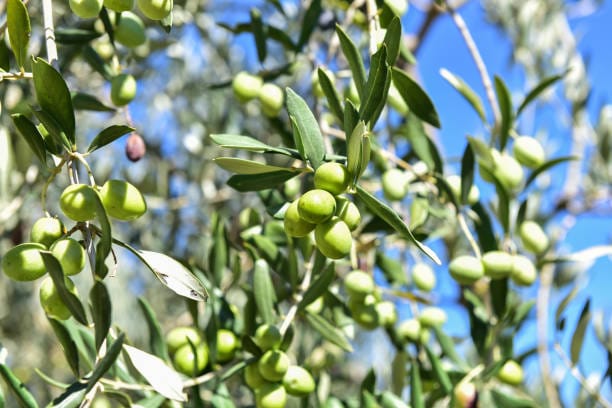
Olive Varieties
Choosing an olive tree variety can make all the difference as to whether or not you will be rewarded with fruit. Most olive trees are chosen for their striking ornamental appearance, but if you’re after fruit then choose wisely. The following variety of olive trees can if looked after properly, produce fruit…- Arbequina olive tree is a self fertile variety which flowers early in the season. A very good fruiter. The Arbequina will produce fruit from four years old.
- Cipressino olive tree is a very hardy tree and shows good resistance to coastal conditions but will require a pollinator to produce an abundance of black olives that are best suited for fine olive oil.
- Frantoio olive tree a self-fertile tree, as well as being a good pollinator; the olives make a lovely, fruity aromatic oil.
- Hojiblanca olive tree
- Leccino olive tree will need to be planted with another Olive tree a good pollinator such as the Arbequina.
- Picual variety, self fertile.
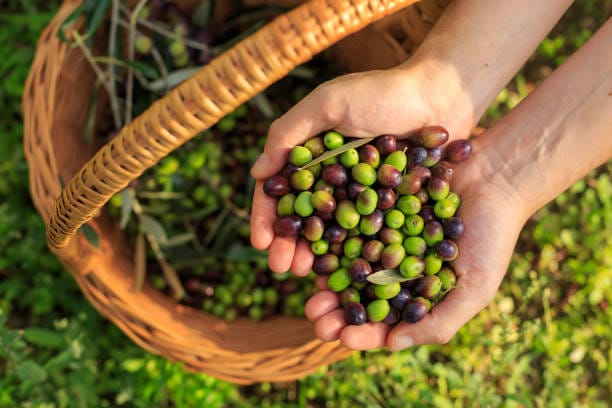
All olives are green until left to ripen into a black olive
How to encourage fruiting
Olive trees may be drought-tolerant, but they need to be kept well-watered, as dry spells can affect flowering and fruiting. They also need feeding regularly with a liquid feed every two weeks during the growing season.If you find your olive tree isn’t producing fruit it could be down to poor pollination or insufficient water when flowers are setting. Also, the variety may not be suitable for the location it is growing.
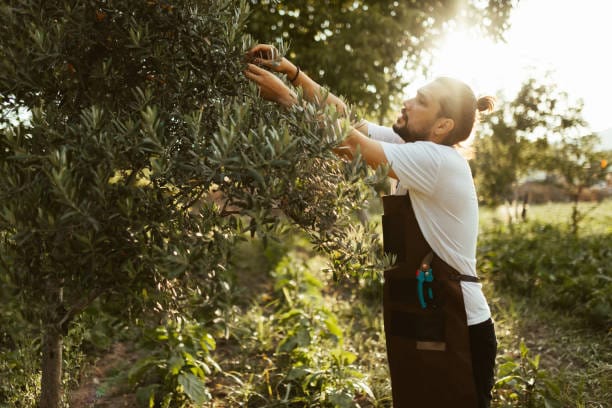
So, to ensure a good crop, make sure the trees have plenty of sunshine and there is plenty of air circulation. In terms of fertiliser, choose one suitable for fruiting trees – ideally one that has a high potassium percentage. Our slow release feed gives the tree the nutrients it requires to help enable fruit production.
The Guano content of our feed has a particularly high nitrogen content and this is important for trees to produce fruit. And finally, if you prune your olive tree after it has produced the season’s crop this will encourage a new crop.
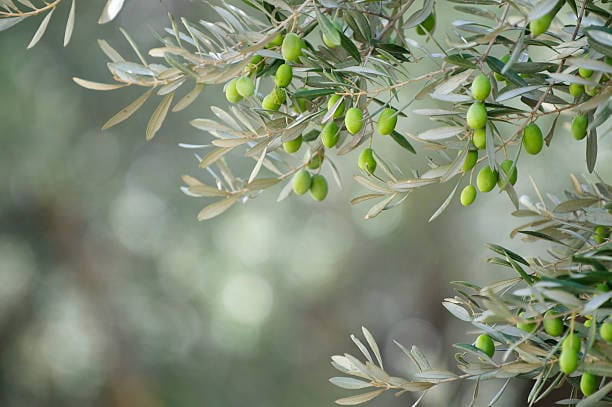
Young green olives hang on branches
ghazi52
Think Tank Analyst
- Mar 21, 2007
- 114,475
- 165,410
- Country of Origin

- Country of Residence

- Thread starter
- #23
5 Reasons to Plant an Olive Tree
26 January, 20231. Olive trees are hardy and long-lived. They can live for hundreds of years and are able to withstand extreme weather conditions. This makes them ideal for planting in a variety of climates.
2. Olive trees are a source of delicious and healthy oil. The oil produced by olives is high in monounsaturated fats and antioxidants, making it a healthy addition to any diet.

olive tapenade
3. Olive trees are also a source of food. The olives themselves can be eaten fresh or cured and are a staple in Mediterranean cuisine.
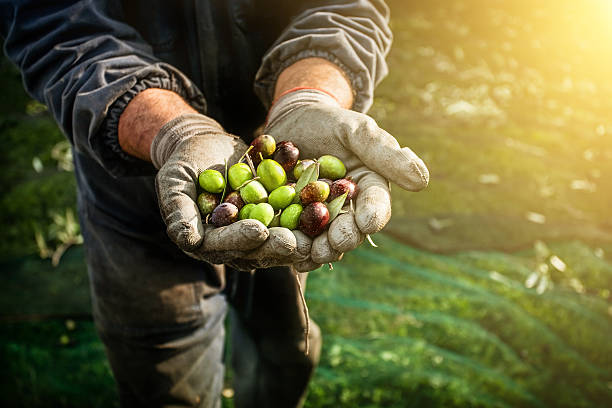
Cure your Olives, recipe above.
4. Olive trees can provide shade and beauty. The trees are evergreen and have a distinctive, gnarled appearance that can add visual interest to any landscape, garden or patio terrace.
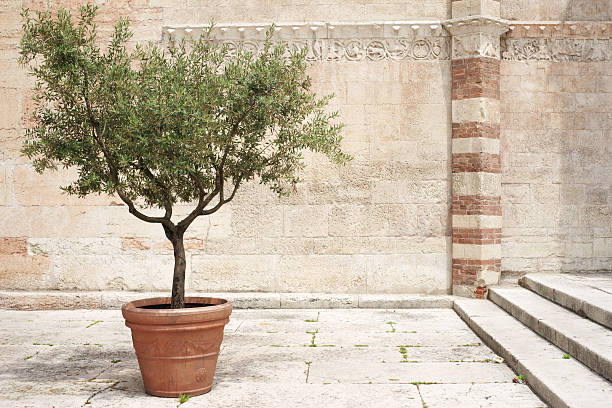
Olive tree in a pot on a hot summer day in front of stone wall
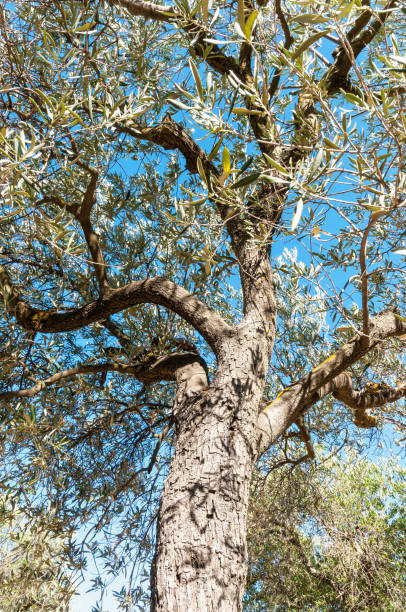
Creating shade is so important in a garden.
5. Olive tree cultivation also helps to preserve biodiversity. The trees provide food and habitat for many species of birds and insects and helps to protect soil and water resources.
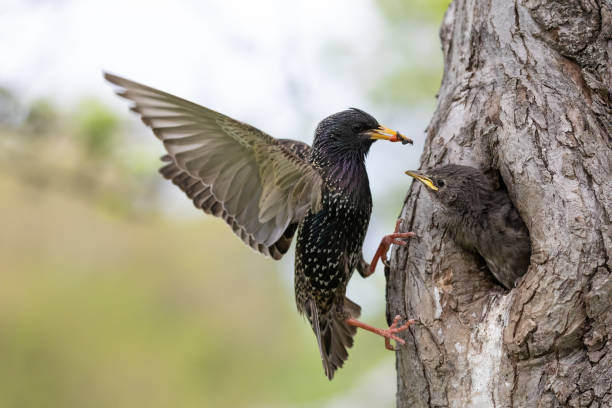
Common Starling feeding its nestling
Olive tree history
In addition, planting an olive tree is a great way to connect with history and tradition. Olives have been cultivated for thousands of years. They have played an important role in the economy, culture, and cuisine of the Mediterranean region.
Planting an olive tree can be a way to honour that history and tradition and to feel a sense of connection to sunnier climbs! Furthermore,
Olive trees are drought-tolerant, which is great for regions where water is scarce and a precious resource. They are also capable of growth in poor soil conditions, which makes them versatile and adaptable.
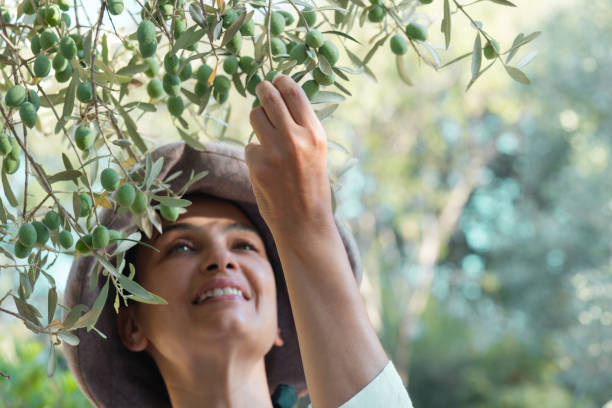
Not only do they offer year long beauty, they are a reminder of sunnier climes.
In conclusion, planting an olive tree has numerous benefits, including being a source of delicious and healthy oil. They also provide shade and beauty and preserve biodiversity. Additionally, it can connect you to history, tradition, and culture. It can also be a great way to make a sustainable and environmentally friendly choice for your garden.
ghazi52
Think Tank Analyst
- Mar 21, 2007
- 114,475
- 165,410
- Country of Origin

- Country of Residence

- Thread starter
- #24
China’s Yunnan province sponsored a tree planting project around National Highway - 5 (N-5), popularly known as "Go Green Pakistan, Yunnan Chapter, Page 1." has recently been finalized. 5000 high temperature and drought-resistant tree saplings are now standing along N-5 in southern Sindh.
As Pakistan increasingly faces the challenges of Climate Change, China's Yunnan, a region renowned for its efforts to restore forests and reduce pollution, stepped forward and made the donation via the Yunnan People's Association for Friendship with Foreign Countries and the China Yunnan Sunny Road and Bridge Corporation, which is working on various infrastructure projects in Pakistan.
The project was carried out in Southern Sindh, one of the hardest hit areas of extreme weather, along the central separator and the interchange area of N-5, Pakistan's north-south traffic trunk road. The project is expected to increase green coverage, ease water-soil losses and raise local residents' awareness of environmental protection.
Following that, the Chinese side will care for the saplings for a year to ensure their survival and maximize the project's impact.
The project has received high praise from Pakistan's Ministry of Economic Affairs, the Capital Development Authority (CDA), and the National Highway Authority (NHA)
As Pakistan increasingly faces the challenges of Climate Change, China's Yunnan, a region renowned for its efforts to restore forests and reduce pollution, stepped forward and made the donation via the Yunnan People's Association for Friendship with Foreign Countries and the China Yunnan Sunny Road and Bridge Corporation, which is working on various infrastructure projects in Pakistan.
The project was carried out in Southern Sindh, one of the hardest hit areas of extreme weather, along the central separator and the interchange area of N-5, Pakistan's north-south traffic trunk road. The project is expected to increase green coverage, ease water-soil losses and raise local residents' awareness of environmental protection.
Following that, the Chinese side will care for the saplings for a year to ensure their survival and maximize the project's impact.
The project has received high praise from Pakistan's Ministry of Economic Affairs, the Capital Development Authority (CDA), and the National Highway Authority (NHA)
ghazi52
Think Tank Analyst
- Mar 21, 2007
- 114,475
- 165,410
- Country of Origin

- Country of Residence

- Thread starter
- #26
First irrigation ( gachilichom )
Spring is coming, after celebrating 21st March Nawroz, landscaping and tree planting has started in Yasin. In the past few days we watered the field, plowed, sowed seeds and got free after plowing for the second time.
After two weeks of waiting, a slight greenery appeared in the field. Two to four days and after waiting, a certain amount of water was diverted to the field from the side channel on the direction of the elders.
This is the first irrigation of the crop which is called "Gachlichum" in Broshski language. I am busy in Aulin irrigation i.e. Gachlichum in my field. After this irrigation the greenery of my field will grow rapidly, after a week ten days the second turn of water will come which in our language It is called "Yatiki". After watering ten twelve times the crop will be ripe and we will harvest it.
Salute to them ... :smitten: :smitten:
Spring is coming, after celebrating 21st March Nawroz, landscaping and tree planting has started in Yasin. In the past few days we watered the field, plowed, sowed seeds and got free after plowing for the second time.
After two weeks of waiting, a slight greenery appeared in the field. Two to four days and after waiting, a certain amount of water was diverted to the field from the side channel on the direction of the elders.
This is the first irrigation of the crop which is called "Gachlichum" in Broshski language. I am busy in Aulin irrigation i.e. Gachlichum in my field. After this irrigation the greenery of my field will grow rapidly, after a week ten days the second turn of water will come which in our language It is called "Yatiki". After watering ten twelve times the crop will be ripe and we will harvest it.
Salute to them ... :smitten: :smitten:
ghazi52
Think Tank Analyst
- Mar 21, 2007
- 114,475
- 165,410
- Country of Origin

- Country of Residence

- Thread starter
- #27
PHA to plant 600,000 geo-tagged saplings in LHR to combat air pollution
The Parks and Horticulture Authorities (PHA) has been directed to plant 600,000 geo-tagged saplings to combat air pollution in Lahore, according to news published in the national dailies on April 27.
As per the details, a strategy has been implemented to combat air pollution by planting 600,000 six-foot saplings in vacant areas in the city. In this regard, a joint committee comprising the Lahore District Administration and Forest Department has been formed to ensure successful implementation. It was revealed that the Lahore Commissioner has requested a list of unused planting sites.
Moreover, the PHA will be planting trees on the routes linking Lahore to other districts. Every sapling will be geotagged and uploaded to a dashboard in order to track the success of the planting initiative. This campaign is a crucial step towards decreasing the detrimental effects of air pollution on the well-being and health of citizens along with promoting the significance of sustainability and environmental conservation for future generations.
The Parks and Horticulture Authorities (PHA) has been directed to plant 600,000 geo-tagged saplings to combat air pollution in Lahore, according to news published in the national dailies on April 27.
As per the details, a strategy has been implemented to combat air pollution by planting 600,000 six-foot saplings in vacant areas in the city. In this regard, a joint committee comprising the Lahore District Administration and Forest Department has been formed to ensure successful implementation. It was revealed that the Lahore Commissioner has requested a list of unused planting sites.
Moreover, the PHA will be planting trees on the routes linking Lahore to other districts. Every sapling will be geotagged and uploaded to a dashboard in order to track the success of the planting initiative. This campaign is a crucial step towards decreasing the detrimental effects of air pollution on the well-being and health of citizens along with promoting the significance of sustainability and environmental conservation for future generations.
ghazi52
Think Tank Analyst
- Mar 21, 2007
- 114,475
- 165,410
- Country of Origin

- Country of Residence

- Thread starter
- #30
Mangrove cover expands by over 4 times in 2 decades, though experts voice concern on degradation
Anadolu Agency
July 25, 2022
Pakistan's mangrove cover has seen rapid expansion along the Arabian Sea over the past two decades due to coordinated efforts by government agencies and environmental organizations.
Speaking to Anadolu Agency on the eve of the International Day for the Conservation of the Mangrove Ecosystem, which is celebrated on July 26 every year, Tahir Rasheed, a regional director of the World Wide Fund for Nature (WWF) Pakistan, said that in Southeast Asia, Pakistan is the only country where mangrove cover has increased dramatically over the last two decades.
Between 1999-2021, the vulnerable mangrove area along Pakistan’s 1,050-kilometer (652-mile) coastline has increased to over 200,000 hectares (over 494,000 acres) from 46,000 hectares (over a 113,000 acres).
A colossal chunk of mangrove forest falls in southern Sindh province, whereas southwestern Balochistan province, which boasts a 700-kilometer (435-mile) coastline, shares a meager portion of nearly 4,000 hectares.
“We witnessed a decline of mangrove forest from 600,000 hectares along the Sindh coastline in the early 20th century to merely 46,000 hectares in the mid-1980s. However, the cover area of mangroves has increased to over 200,000 hectares along the Sindh and Balochistan coastline over the past two decades,” Rasheed said.
Due to the “well-coordinated” plantation and rehabilitation campaigns by the Sindh Forest Department the federal government, WWF-Pakistan, and civil society organizations, the country’s mangrove cover is increasing at a “good pace,” he went on to say.
A host of projects by WWF-Pakistan alone have contributed 16,000 hectares to the country’s overall mangrove cover, apart from the rehabilitation of 32,000 hectares, he added.
Danger still lurking
Mangroves, a group of trees and shrubs that grow in the intertidal regions of tropical and subtropical coastlines, are significantly important for ecosystems and are considered the first line of defense against cyclones, strong surges, tsunamis, and other natural calamities.
The Sindh coast, particularly the port city of Karachi, has been reeling from a relentless process of morphological changes mainly due to anthropogenic activities including industrial pollution, soil erosion, deforestation, rapid industrialization, urbanization, and land degradation in addition to natural processes.
Industrial and economic infrastructure development, land-grabbing and inhabitation along the coast, and the construction of huts at beaches have adversely impacted the marine ecosystems and mangroves of the adjoining creeks, say environmentalists.
Making matters worse, some natural phenomena such as high energy waves, tidal currents, and strong winds during monsoons have also influenced changes along the coast.
Acknowledging a “rapid” increase in mangrove cover in the country, Hammad Gilani, a Lahore-based environmentalist, nonetheless observed that the danger is still lurking.
“Mangroves along Pakistan’s coastal belt and Indus Delta are still facing two key threats in the form of sea intrusion and degradation,” Gilani, a researcher at the International Water Management Institute in Lahore, told Anadolu Agency.
“Deforestation (of mangroves) is not a big problem. But degradation, which includes some justifiable livestock needs, is really an issue,” he argued.
He noted that rising sea levels have long been wreaking havoc on mangroves, especially in the Indus Delta, from where the Indus River flows into the Arabian Sea.
Also, mangroves require a systematic flow of fresh water, which unfortunately does not persist at the moment, he said.
Gilani noted that the South Asian country has seen a rapid augmentation in mangrove cover after the 2010 massive floods, which, although inundating a fifth of Pakistan, made up for a freshwater shortage.
Sharing a similar view, Rasheed said: "To keep the momentum going, we have to create awareness among the masses, and especially the policymakers, about the environmental significance of the mangroves and reinforce how important they are as the threat is not over yet."
Bulwark against sea battering
Thick mangroves have long protected Karachi and its coastal communities from erosion caused by the Arabian Sea's unending waves, observed Shabina Faraz, a Karachi-based expert, who often writes on the environment.
However, she added, the fragile ecosystem faces numerous threats, from coastal development, urbanization, and encroachment to the commercial exploitation of mangroves, reduction of freshwater flows and sedimentation, erosion of coastal areas, chemical dumping, and raw sewage.
"Karachi city alone contributes 500 million gallons of untreated water to the sea. Apart from that, polluted water from 6,000 industries also contributes high-impact pollutants to the Arabian sea that negatively affect the mangrove ecosystem and marine fauna," she maintained, speaking to Anadolu Agency.
Gilani, the Lahore-based expert, said that despite an increasing mangrove cover, satellite imagery has punctuated the need for national-scale carbon sequestration reporting for a performance-based payment mechanism flowing from developed countries to developing ones.
Seconding his view, Faraz said carbon sequestration reporting could add to the national economy "significantly."
Anadolu Agency
July 25, 2022
Pakistan's mangrove cover has seen rapid expansion along the Arabian Sea over the past two decades due to coordinated efforts by government agencies and environmental organizations.
Speaking to Anadolu Agency on the eve of the International Day for the Conservation of the Mangrove Ecosystem, which is celebrated on July 26 every year, Tahir Rasheed, a regional director of the World Wide Fund for Nature (WWF) Pakistan, said that in Southeast Asia, Pakistan is the only country where mangrove cover has increased dramatically over the last two decades.
Between 1999-2021, the vulnerable mangrove area along Pakistan’s 1,050-kilometer (652-mile) coastline has increased to over 200,000 hectares (over 494,000 acres) from 46,000 hectares (over a 113,000 acres).
A colossal chunk of mangrove forest falls in southern Sindh province, whereas southwestern Balochistan province, which boasts a 700-kilometer (435-mile) coastline, shares a meager portion of nearly 4,000 hectares.
“We witnessed a decline of mangrove forest from 600,000 hectares along the Sindh coastline in the early 20th century to merely 46,000 hectares in the mid-1980s. However, the cover area of mangroves has increased to over 200,000 hectares along the Sindh and Balochistan coastline over the past two decades,” Rasheed said.
Due to the “well-coordinated” plantation and rehabilitation campaigns by the Sindh Forest Department the federal government, WWF-Pakistan, and civil society organizations, the country’s mangrove cover is increasing at a “good pace,” he went on to say.
A host of projects by WWF-Pakistan alone have contributed 16,000 hectares to the country’s overall mangrove cover, apart from the rehabilitation of 32,000 hectares, he added.
Danger still lurking
Mangroves, a group of trees and shrubs that grow in the intertidal regions of tropical and subtropical coastlines, are significantly important for ecosystems and are considered the first line of defense against cyclones, strong surges, tsunamis, and other natural calamities.
The Sindh coast, particularly the port city of Karachi, has been reeling from a relentless process of morphological changes mainly due to anthropogenic activities including industrial pollution, soil erosion, deforestation, rapid industrialization, urbanization, and land degradation in addition to natural processes.
Industrial and economic infrastructure development, land-grabbing and inhabitation along the coast, and the construction of huts at beaches have adversely impacted the marine ecosystems and mangroves of the adjoining creeks, say environmentalists.
Making matters worse, some natural phenomena such as high energy waves, tidal currents, and strong winds during monsoons have also influenced changes along the coast.
Acknowledging a “rapid” increase in mangrove cover in the country, Hammad Gilani, a Lahore-based environmentalist, nonetheless observed that the danger is still lurking.
“Mangroves along Pakistan’s coastal belt and Indus Delta are still facing two key threats in the form of sea intrusion and degradation,” Gilani, a researcher at the International Water Management Institute in Lahore, told Anadolu Agency.
“Deforestation (of mangroves) is not a big problem. But degradation, which includes some justifiable livestock needs, is really an issue,” he argued.
He noted that rising sea levels have long been wreaking havoc on mangroves, especially in the Indus Delta, from where the Indus River flows into the Arabian Sea.
Also, mangroves require a systematic flow of fresh water, which unfortunately does not persist at the moment, he said.
Gilani noted that the South Asian country has seen a rapid augmentation in mangrove cover after the 2010 massive floods, which, although inundating a fifth of Pakistan, made up for a freshwater shortage.
Sharing a similar view, Rasheed said: "To keep the momentum going, we have to create awareness among the masses, and especially the policymakers, about the environmental significance of the mangroves and reinforce how important they are as the threat is not over yet."
Bulwark against sea battering
Thick mangroves have long protected Karachi and its coastal communities from erosion caused by the Arabian Sea's unending waves, observed Shabina Faraz, a Karachi-based expert, who often writes on the environment.
However, she added, the fragile ecosystem faces numerous threats, from coastal development, urbanization, and encroachment to the commercial exploitation of mangroves, reduction of freshwater flows and sedimentation, erosion of coastal areas, chemical dumping, and raw sewage.
"Karachi city alone contributes 500 million gallons of untreated water to the sea. Apart from that, polluted water from 6,000 industries also contributes high-impact pollutants to the Arabian sea that negatively affect the mangrove ecosystem and marine fauna," she maintained, speaking to Anadolu Agency.
Gilani, the Lahore-based expert, said that despite an increasing mangrove cover, satellite imagery has punctuated the need for national-scale carbon sequestration reporting for a performance-based payment mechanism flowing from developed countries to developing ones.
Seconding his view, Faraz said carbon sequestration reporting could add to the national economy "significantly."
Users who are viewing this thread
Total: 4 (members: 0, guests: 4)
Pakistan Defence Latest
Country Watch Latest
-
-
-
Iranian Special Presidential Elections 2024 (post shaheed Ebrahim Raisi) (4 Viewers)
- Latest: Pak Defender
-




